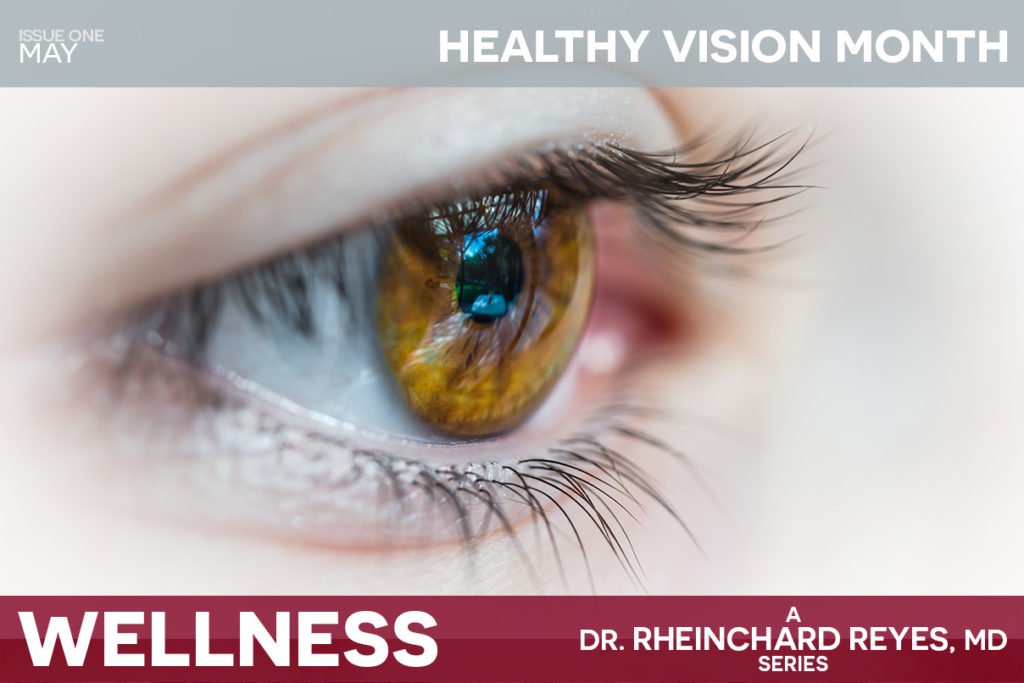Healthy vision month raises awareness on your eyes’ and vision’s well-being. It’s also a time to learn methods to help prevent vision loss and even blindness. Your eyes provide about 80% of the information we absorb daily so it goes without saying how important it is to make sure they stay healthy. Most vision issues are preventable and there are many ways you can be proactive about your eye health, starting with an eye exam.
Following are some facts and tips about your eyes:
EYE EXAMS
According to the National Eye Institute, over 23 million adults in the U.S. have never had an eye exam. Many serious eye conditions can go undetected, as they show no warning signs. In fact, often times people don’t realize they need glasses until they see an eye specialist. The only way to ensure that your vision is fine and your eyes are healthy is to get an eye exam. WebMD has compiled common vision problems and their symptoms, as follows:
Nearsightedness: Blurry vision that gets worse when you look at distant objects. Your doctor will call it myopia. You may have very good close vision.
Nearsightedness: Blurry vision that gets worse when you look at distant objects. Your doctor will call it myopia. You may have very good close vision.
- Farsightedness: Blurry vision when you look at close up objects. Near and far objects may both look fuzzy. The doctor will say you have hyperopia.
- Astigmatism: You might have blurry or double vision at any distance. You may also be nearsighted or farsighted.
- Detached retina: You’ll notice a sudden onset of flashing lights often paired with black floaters in your vision. It won’t hurt, but you might feel like a dark curtain or veil covers a portion of your vision. Cover one eye and then the other and compare the sight in each one.
- Color blindness: You have trouble with shades or intensity of colors. Because it’s all about perception, you may not know there’s a problem until the doctor finds it. This genetic condition mainly affects men.
FAMILY HISTORY
Genetics play big role in the illnesses we may or may not develop throughout your life. There’s no exception when it comes to your vision and eye health. Knowing your family’s history can help you find out whether you’re at high risk at developing diseases or conditions of the eye and the visual system. If you find out that any eye conditions run in your family, contact your doctor to ensure you’re not living with eye disease. As with many health matters, the sooner you get diagnosed, the quicker you can receive treatment and avoid the worsening of symptoms.
PROTECTING YOUR EYES
In the U.S., eye injuries are quite common. Based on data from the National Eye Institute, emergency rooms treat someone with a sports related eye injury every 13 minutes. Further, an average of 2,000 people in the U.S. receive a work related eye injury. Fortunately, there’s a variety of protective eyewear available such as safety shields, glasses and goggles. Beyond any potential work or sports hazards, our eyes require protection from the sun’s powerful UV rays. Even on a cloudy day, UV rays can still penetrate your cornea and cause damage over time. When shopping for sunglasses, you’ll need to search for ones that block out at least 99% of UVA and UVB radiation.
MAINTAINING A HEALTHY DIET AND WEIGHT
Although weight gain and obesity may not directly affect your vision, they can lead to conditions which can cause vision loss, like diabetes. Maintaining a healthy weight by staying active and eating a balanced diet can help your protect your eyes. Studies show that eating fish like salmon and tuna can help keep your eyes and vision healthy due to their high concentration of omega-3 fatty acids. Dark leafy greens like spinach and kale also provide protection.
To learn more about your vision and eye health or if you think your vision is declining, contact your healthcare provider.


